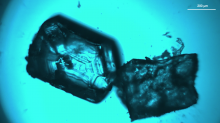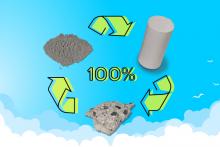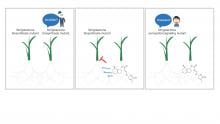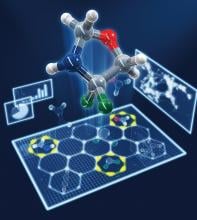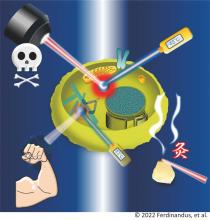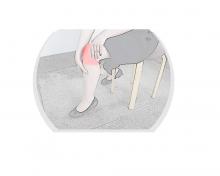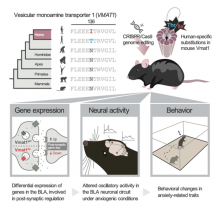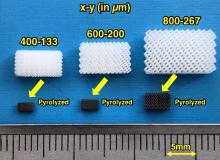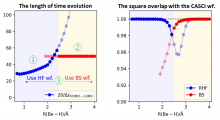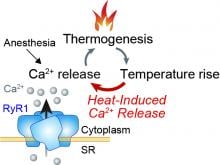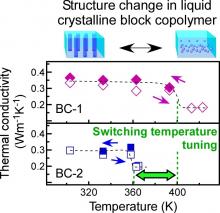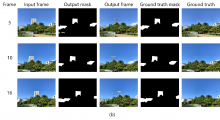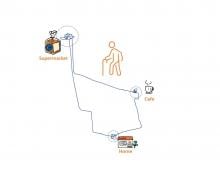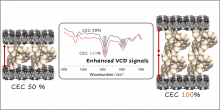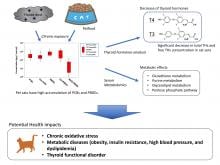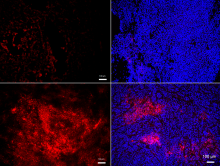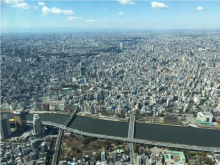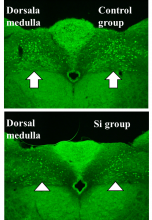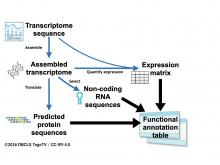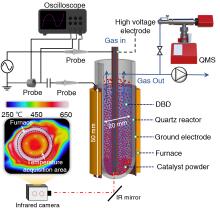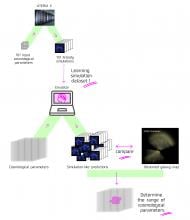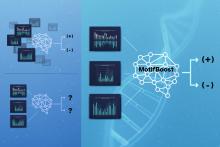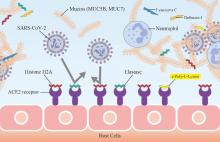Japan
News
09 Aug 2022
Researchers from the Institute of Industrial Science, The University of Tokyo have used thermal treatments to improve modern recycling of concrete. This work will add value to construction waste and contribute to sustainable development
09 Aug 2022
Researchers at Kanazawa University report in Communications Biology that using common chemicals for fixing living cell samples for microscopy studies causes membrane proteins to aggregate.
09 Aug 2022
Strigolactones (SLs) trigger parasitism and symbiosis in the rhizosphere and function as a hormone in plants.
Yoneyama et al. demonstrate that rice plants sense SLs in the rhizosphere and regulate their SL biosynthesis and exudation, suggesting that SLs act as a cue for a plant-plant communication in rice plants.
08 Aug 2022
Reaction design framework proposed by computations leads to the discovery of a wealth of reactions, opening new paths for drug development.
08 Aug 2022
Researchers at Kanazawa University report in ACS Nano the development of a nanoparticle that acts as a heater and a thermometer. Inserting the nanoparticle in living cells results in a heat spot that, by switching it on and off, enables the controlled modulation of local cellular activities.
08 Aug 2022
Scientists from the Institute of Industrial Science, The University of Tokyo, demonstrate that accounting for liquid preordering is essential to predicting crystal growth
06 Aug 2022
Osaka Metropolitan University scientists revealed quadriceps tendon-patellar bone (QTB) grafts as a more suitable option than bone-patellar tendon-bone (BPTB) grafts for anterior cruciate ligament (ACL) reconstruction. Examinations in human cadavers and ACL reconstruction patients showed that the QTB graft is more similar to the ACL at the femoral insertion site than the BPTB graft. The difference between graft bending angle (GBA) and an angle corresponding to GBA showed that the QTB graft bends less than the BPTB graft, suggesting a lower risk of excessive stress on the insertion site and thereby a lower probability of ACL reconstruction failures. These findings contribute to potential improvement in ACL reconstruction for knee injury patients.
05 Aug 2022
New research using genome editing technology has allowed scientists to create a model and assess a gene mutation associated with neuropsychiatric disorders in humans. The study has revealed how the mutation functions in the brain and affects anxiety and sociality.
05 Aug 2022
New, easily fabricated, high performance carbon microlattice electrodes could soon be used to make cheaper batteries powered by readily available sodium ions. The approach was published by Tohoku University researchers and colleagues in the journal Small.
04 Aug 2022
When the evolution of towns and of roads are modeled together, the natural landscape alone is enough to predict the actual arrangement of real towns.
03 Aug 2022
Researchers have discovered that vitamin K acts as a powerful antioxidant. It can inhibit ferroptosis, a type of cell death associated with Alzheimer’s disease and organ damage, by trapping lipid radicals. Furthermore, the team identified the long-sought-after vitamin K-reducing enzyme, the identity of which remained unknown for more than half a century.
02 Aug 2022
Osaka Metropolitan University researchers have clarified the first suitable computational conditions for Adiabatic State Preparation (ASP) executable on a quantum computer, a method that can improve the accuracy of calculating atomic and molecular wave functions.
ASP is thought to be one of the leading methods for efficiently preparing correlated wave functions of molecules with complex electronic structures, but the specific conditions required for the calculations have not been thoroughly investigated so far. This new research has clarified the computational conditions needed to use ASP, a major development for making quantum chemical calculations on a quantum computer practical for chemical or materials research.
01 Aug 2022
A team of researchers led by Osaka University has found that mutations in the calcium channel protein RyR1 that confer susceptibility to malignant hyperthermia make the protein hypersensitive to heat, which triggers excessive calcium release from the endoplasmic reticulum. Clarifying the mechanism by which calcium release is accelerated at an elevated temperature in patients with malignant hyperthermia may also provide important insight into how exertional heat stroke occurs under extreme environmental conditions.
28 Jul 2022
Researchers from Osaka University and collaborating partners measured intracellular temperature gradients in human-derived cells at unprecedented spatial, temporal, and readout resolution. Intracellular temperature is a fundamental indicator of health, and corresponding gradients are the subject of medical hypotheses as well as potential drug development directions. The results of this work will advance such research by providing a versatile tool that's compatible with standard technology and procedures.
27 Jul 2022
Researchers from Osaka University and collaborating partners used straightforward chemical synthesis to modulate the phase transition of a thermal conductivity-switching block copolymer. Reversible changes in the nanostructured anisotropy in the material corresponded to an approximately two-fold change in the thermal conductivity, over the 27°C to 147°C temperature range. These results will enhance the sustainability of upcoming advanced flexible organic electronics.
27 Jul 2022
Osaka University researchers created a diminished reality system for providing a future view of a building to be demolished. By implementing generative adversarial networks on a remote server, the team was able to stream real-time video that predicted what a landscape would look like after a building was demolished. This technology can help with urban renewal planning and stakeholder discussions.
26 Jul 2022
A research group led by Associate Professor Kazuki Uemura of the Graduate School of Rehabilitation Science, Osaka Metropolitan University conducted a cross-sectional study, using GPS and accelerometers, of 133 elderly people (aged 65 or older) in Toyama Prefecture to investigate their out-of-home behavior and amounts of physical activity during 14 days. The results demonstrated that the amounts of physical activity among the participants were more strongly influenced by the number of visited places (nodes) than by out-of-home time. This suggests that diversity, not just duration, of out-of-home behavior may be important when encouraging the elderly to go out to extend their life expectancy.
26 Jul 2022
Evidence for Molecular Packing of Monovalent Iridium (III) Complexes within Interlayer Spaces of Sodium Montmorillonite
26 Jul 2022
Exposure to persistent organic pollutants in pet cats lowers blood thyroid hormone levels and causes chronic oxidative stress.
25 Jul 2022
A key molecule for cancer metastasis has been identified as a molecule already known for its involvement in cardiovascular disease, suggesting a possible treatment approach for both diseases simultaneously.
25 Jul 2022
Three of the nuclear power plants that supplied Tokyo, Japan with its electricity have been shut down since 2003. To understand the long-term implications of this change to Tokyo’s power grid, researchers studied how CO2 emissions in the city differed since the power plant closures.
22 Jul 2022
Osaka University researchers designed a silicon-based agent that successfully generated hydrogen continuously in the mouse gastrointestinal tract in an ulcerative colitis (UC) model. The hydrogen served as an antioxidant that could eliminate the reactive oxygen species shown to induce the chronic inflammation responsible for the damage and symptoms caused by UC. Mice given the agent had reduced hemorrhage, inflammation, and hyperexcitability in the brain area associated with visceral pain and discomfort. These results may help with the development of a novel treatment for UC.
22 Jul 2022
Research team develops functional annotation workflow for genome sequencing of insects
22 Jul 2022
Nonthermal plasma (NTP) is used to activate CO2 molecules for hydrogenation into alternative fuels at low temperatures, also enabling the conversion of renewable electricity to chemical energy. Researchers from Tokyo Tech combined experimental and computational methods to investigate the hydrogenation pathway of NTP-promoted CO2 on the surface of Pd2Ga/SiO2 catalysts. The mechanistic insights from their study can help improve the efficiency of catalytic hydrogenation of CO2 and allows the engineers to design new concept catalysts.
21 Jul 2022
A neural network method machine-learning technique has enabled researchers to develop a very fast and highly efficient software program that can make theoretical predictions about structure formation in the universe.
20 Jul 2022
The quest for the ideal COVID-19 policies to contain outbreaks without border closures that harm the travel industry led researchers to one protocol.
20 Jul 2022
Researchers at the Institute of Industrial Science at The University of Tokyo introduce a machine learning method to help predict past infection from receptor sequences of immune T-cells even when little data is available, which may help improve human health and our understanding of adaptive immunity
19 Jul 2022
Saliva and oral cells are important routes for transmission and infection by the novel coronavirus COVID-19. A research group led by Associate Professor Misako Matsubara and Specially Appointed Professor Katsutoshi Yoshizato of Osaka Metropolitan University hypothesized that the body's innate immune system may protect against SARS-CoV-2 infection. The onset and severity of COVID-19 are age-dependent, as are parts of the innate immune system like saliva production and quality, which are significantly reduced in the elderly. They found that saliva from healthy individuals prevented the binding of the SARS-CoV-2 spike protein S1 on the viral envelope to the angiotensin-converting enzyme 2 (ACE2) receptor present on the plasma membrane of human cells in a concentration-dependent manner.
15 Jul 2022
Cultured human skeletal muscle cells infused with serum from hibernating bears exhibited “muscle gain” confirming that these creatures’ ability to avoid muscular damage despite months of inactivity is in their blood.
Researchers
Sorry, no researchers coming up for this topic.
Giants in history
Ruby Sakae Hirose (1904 – 1960) was a Japanese-American scientist whose research contributed significantly to our understanding of blood clotting, allergies and cancer.
Haisako Koyama (1916 – 1997) was a Japanese solar observer whose dedication to recording sunspots – cooler parts of the sun’s surface that appear dark – produced a sunspot record of historic importance.
Michiaki Takahashi (17 February 1928 – 16 December 2013) was a Japanese virologist who developed the first chickenpox vaccine.
Toshiko Yuasa (11 December 1909 – 1 February 1980) was the first Japanese female physicist whose research on radioactivity shed light on beta decay – the process in which an atom emits a beta particle (electron) and turns into a different element.
Baron Kitasato Shibasaburo (29 January 1856 – 13 June 1931) was a Japanese physician and bacteriologist whose work led to a new understanding of preventing and treating tetanus, diphtheria and anthrax.
By isolating soil microorganisms and studying the compounds they produce, Satoshi Omura (born 1935) discovered almost 500 organic compounds with unique properties that were produced by these microorganisms, including many new antibiotics.
In 1915, pathologist Katsusaburo Yamagiwa and his research assistant Koichi Ichikawa became the first to prove that chronic exposure to chemicals can cause cancer.
In 1915, Koichi Ichikawa along with pathologist Katsusaburo Yamagiwa became the first to prove that chronic exposure to chemicals can cause cancer.
Reiji Okazaki (8 October 1930 – 1 August 1975) and Tsuneko (7 June 1933) were a Japanese couple who discovered Okazaki fragments – short sequences of DNA that are synthesized during DNA replication and linked together to form a continuous strand.
Tsuneko (7 June 1933) and Reiji Okazaki (8 October 1930 – 1 August 1975) were a Japanese couple who discovered Okazaki fragments – short sequences of DNA that are synthesized during DNA replication and linked together to form a continuous strand.
Husband and wife team, Kimishige (3 December 1925 – 6 July 2018) and Teruko Ishizaka (28 September 1926 – 4 June 2019) discovered the antibody class Immunoglobulin E (IgE) that triggers allergic reactions. They also discovered that IgE antibodies attach to white blood cells, known as mast cells, releasing histamine, which causes allergic reactions.
Husband and wife team, Kimishige (3 December 1925 – 6 July 2018) and Teruko Ishizaka (28 September 1926 – 4 June 2019) discovered the antibody class Immunoglobulin E (IgE) that triggers allergic reactions. They also discovered that IgE antibodies attach to white blood cells, known as mast cells, releasing histamine, which causes allergic reactions.
Japanese chemist Takamine Jokichi (3 November 1854 – 22 July 1922) founded the Tokyo Artificial Fertilizer Company, where he isolated a starch-digesting enzyme (named takadiastase) from the fungus Aspergillus oryzae.
Hideki Yukawa (23 January 1907 – 8 September 1981) was awarded the Nobel Prize in Physics in 1949 for predicting the existence of the pi meson subatomic particle. Japan’s first Nobel laureate, Yakawa also expressed his support for nuclear disarmament by signing the Russell–Einstein Manifesto in 1955.
Shinichiro Tomonaga (31 March 1906 – 8 July 1979), together with Richard Feynman and Julian Schwinger, was awarded the Nobel Prize in Physics in 1965, for their contributions to advance the field of quantum electrodynamics. Tomonaga was also a strong proponent of peace, who actively campaigned against the proliferation of nuclear weapons and promoted the peaceful use of nuclear energy.
Japanese chemist Kenichi Fukui (4 October 1918 – 9 January 1998) was the first Asian scientist to be awarded the Nobel Prize in Chemistry. Together with Roald Hoffman, he received this honour in 1981 for his independent research into the mechanisms of chemical reactions.
Minoru Shirota (April 23, 1899 – March 10, 1982) was a Japanese microbiologist who invented the popular fermented drink Yakult.
Japanese physicist Ukichiro Nakaya (1900-1962) made the world’s first artificial snowflakes. He started his research on snow crystals in the early 1930s at Hokkaido University, where there is an unlimited supply of natural snow in winter. By taking over 3,000 photographs, he established a classification of natural snow crystals and described their relationship with weather conditions.
The techniques that make industrial pearl culturing possible were developed over a century ago at the Misaki Marine Biological Station in Japan. The station’s first director, Professor Kakichi Mitsukuri, emphasized to Kokichi Mikimoto in 1890 that stimulating pearl sac formation was important for pearl growth, and they went on to successfully develop methods for culturing pearls.
The field of solid-state ionics originated in Europe, but Takehiko Takahashi of Nagoya University in Japan was the first to coin the term ‘solid ionics’ in 1967. ‘Solid-state ionics’ first appeared in 1971 in another of his papers, and was likely a play on ‘solid-state electronics’, another rapidly growing field at the time.
Chika Kuroda (24 March 1884 – 8 November 1968) was a Japanese chemist whose research focussed on the structures of natural pigments.
Motoo Kimura (13 November 1924 – 13 November 1994) was a Japanese theoretical population geneticist who is best remembered for developing the neutral theory of molecular evolution.
Osamu Shimomura (27 August 1928 – 19 October 2018) was a Japanese organic chemist and marine biologist who dedicated his career to understanding how organisms emitted light.
Kikunae Ikeda (8 October 1864 – 3 May 1936) was a Japanese chemist who discovered the fifth basic taste, umami.
Umetaro Suzuki (7 April 1874 – 20 September 1943) was a Japanese scientist best remembered for his research on beriberi, a disease caused by vitamin B1 deficiency, characterized by limb stiffness, paralysis and pain.
Kono Yasui (16 February 1880 – 24 March 1971) was a Japanese botanist who researched the genetics of poppies, corn and spiderworts and surveyed the plants that had been affected by the nuclear fallout after the atomic bombings of Hiroshima and Nagasaki.
Hitoshi Kihara (1893 – 1986) was one of the most famous Japanese geneticists of the 20th century. One of his most significant contributions was identifying sex chromosomes (X and Y) in flowering plants.
Michiyo Tsujimura (17 September 1888 – 1 June 1969) was a Japanese agricultural scientist and biochemist recognized for her research of green tea components.
A Japanese surgeon, Tetsuzo Akutsu (20 August 1922 – 9 August 2007) built the first artificial heart capable of keeping an animal alive.
Ogino Ginko (3 March 1851 – 23 June 1913) was the first registered female doctor to practise modern medicine in Japan.
Japanese geochemist Katsuko Saruhashi developed the first method and tools for measuring carbon dioxide in seawater


